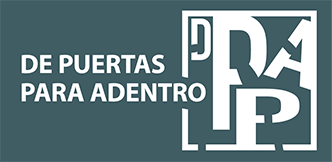Materials
Bibliographic Corpus
As part of our research project entitled De puertas para adentro: vida y distribución de espacios en la arquitectura doméstica(siglos XV-XVI), (Behind closed doors: life and the distribution of space in domestic architecture (15th-16th centuries) and in order to offer all those interested in research on the house a tool that facilitates their research work, we have drawn up a bibliographic corpus containing all the publications about the study of the house in 15th and 16th century Spain. Our work here went beyond compiling a list of publications about architectural aspects of the house to include articles that study the house from a broader, more integrated perspective, viewing it not only as a dwelling or a place in which to live but also as a setting or stage in which social relations, such as those of gender, are constructed and at times breached. We relate the house with those who dwelled in it and with the uses to which it was put. To do this we have to open the doors of the house to look inside and explore its “private” life.
As mentioned earlier, we will be focusing our attention on studies of the Spanish house in the 15th and 16th centuries. This is a complex historical period when the Middle Ages and the Islamic presence in the Iberian Peninsula were coming to an end, giving way to the Modern Age with a Christianized Spain with huge interests and presence in the New World and other geographically closer regions such as Italy. For all of these reasons it is sometimes difficult to distinguish between apparently clearly defined, distinguishable concepts, which become blurred when applied in the analysis of houses. This is what happens when talking about Christian, Mudejar and Morisco styles or features, all of which can continue and coexist within a single house.
In order to try to clarify this issue in our research, we have broken it down into nine large thematic blocks. This structure is intended to be flexible and rather than establishing strict boundaries the different sections aim to guide users, with the result that for example the same publication can appear in various different sections or can go beyond the proposed chronological limits for this project if its contents so require.
In conclusion it is important to make clear that as a general rule with very few exceptions, this corpus does not include publications on royal dwellings (royal palaces and mansions), as these have been widely covered in other research studies and because they are outside the scope of this project. We are well aware that the text we are presenting is far from finished or complete and instead should be considered a living document. It should therefore be subject to continuous review and open to the inclusion of new publications. We hope that it achieves its intended objectives and provides a useful tool for research into Spanish houses.
Publications of a general nature about the house
Houses in the Christian kingdoms
Houses in al-Andalus (C.15). Mudejar and Morisco Houses
Jewish houses
Building materials and formal aspects of the house
Everyday life in the house
Houses belonging to Spaniards in Italy or to Italians in Spain
Spanish influences in Latin American houses
Interesting documentary sources

Esta obra está bajo una licencia Reconocimiento-NoComercial-SinObraDerivada
3.0 Creative Commons
Autora del corpus bibliográfico: Mª Encarnación Hernández López
Dirección: Mª Elena Díez Jorge
Supervisión: Equipo Proyecto Vidarq





